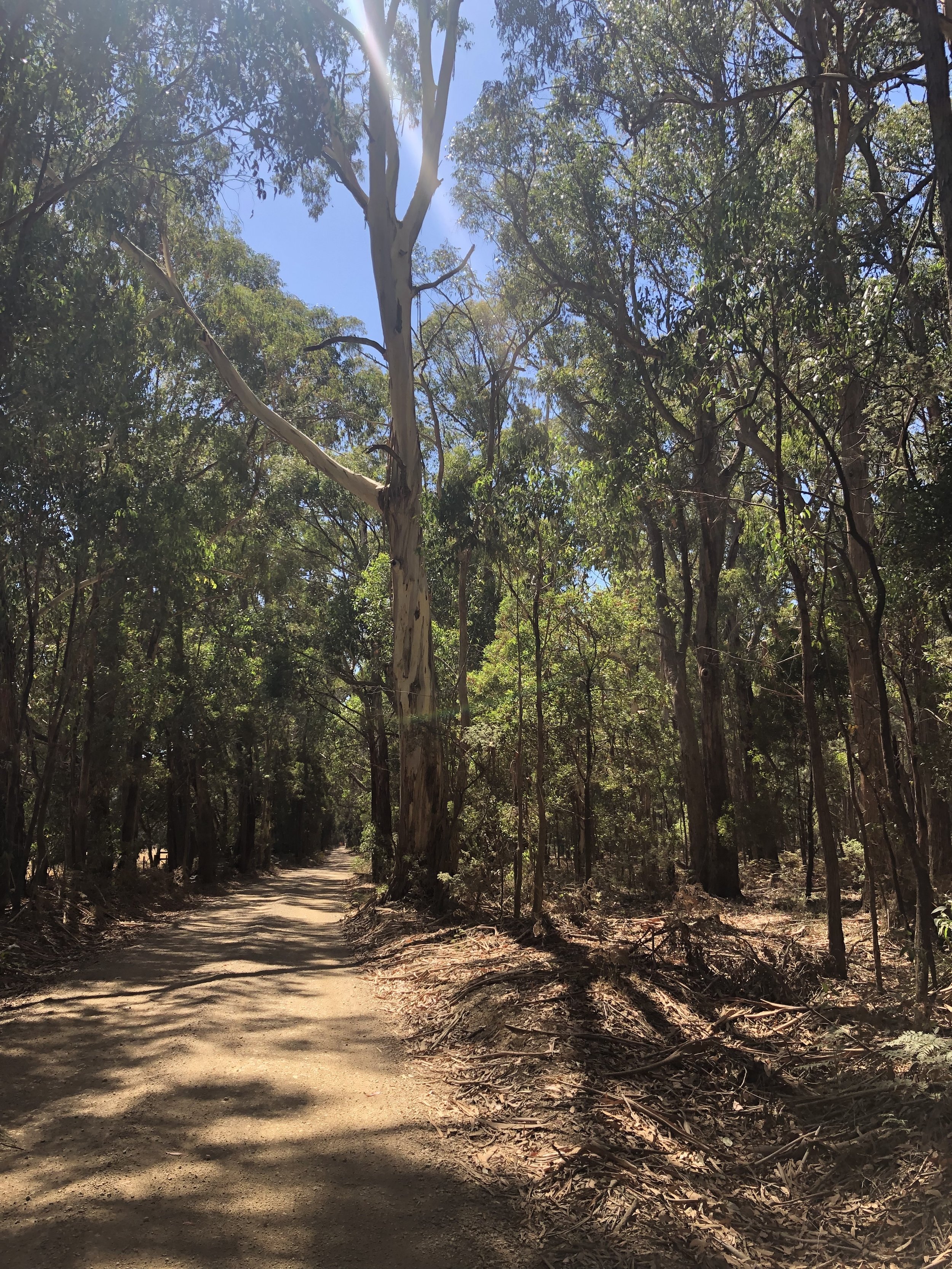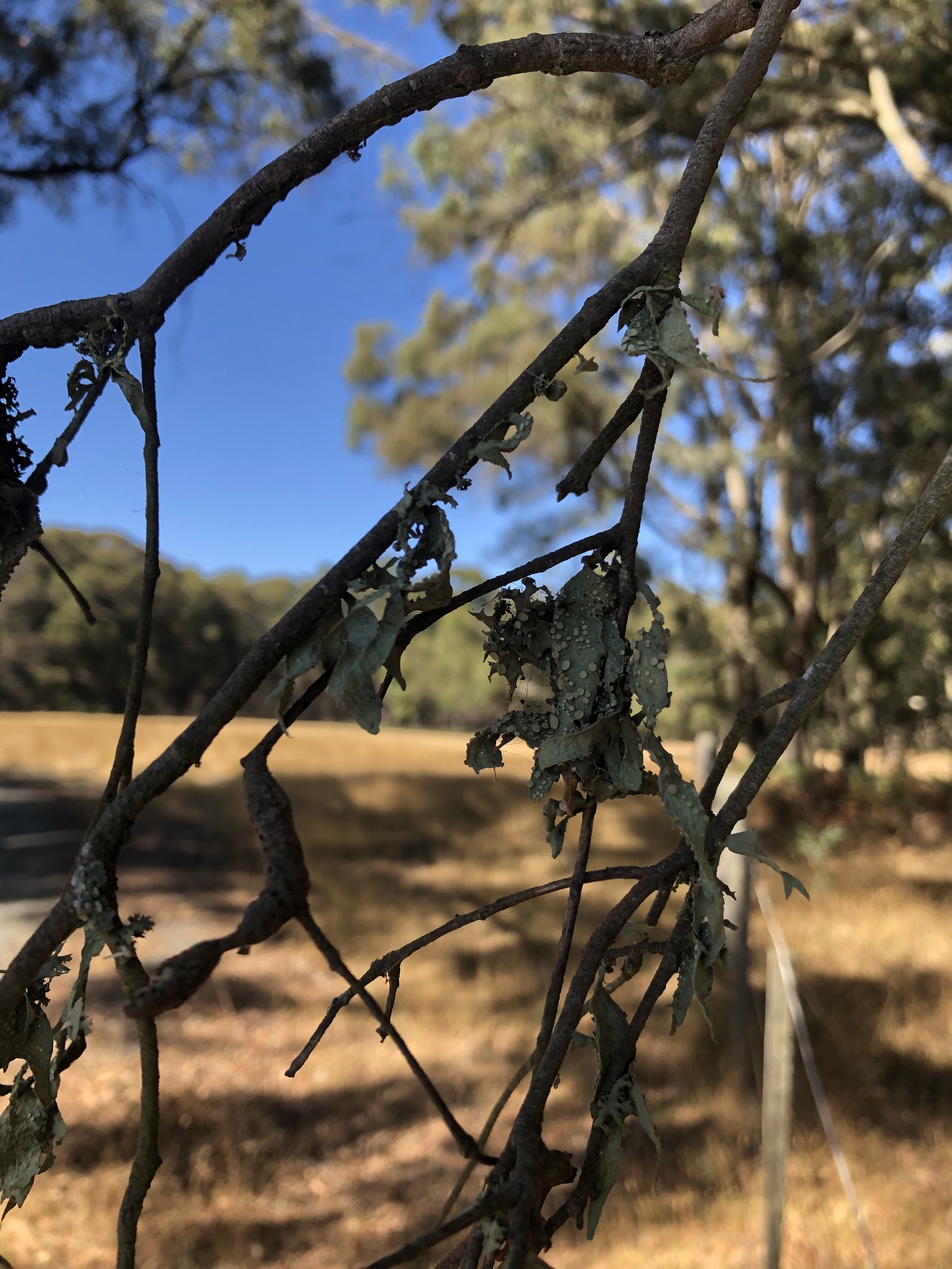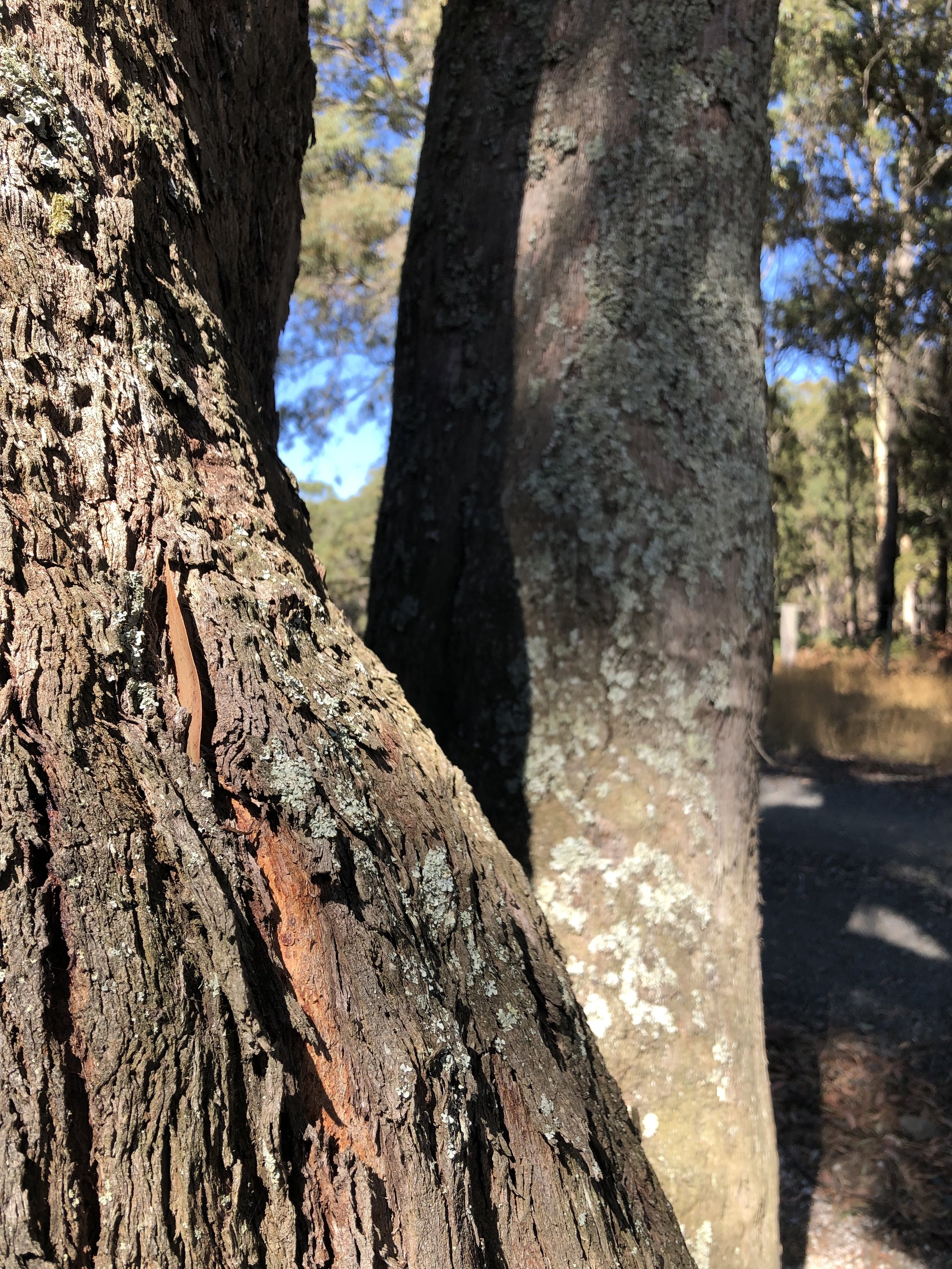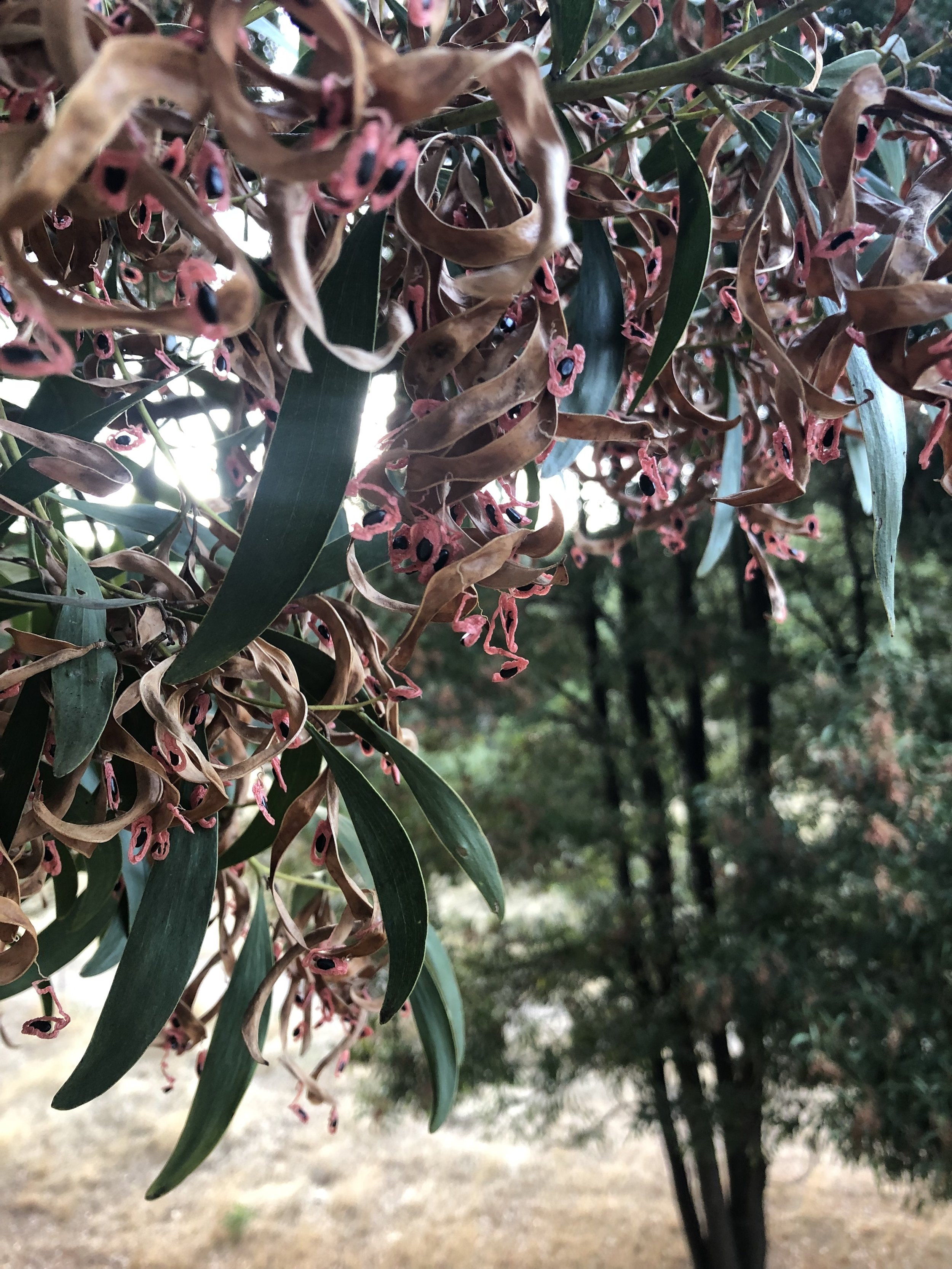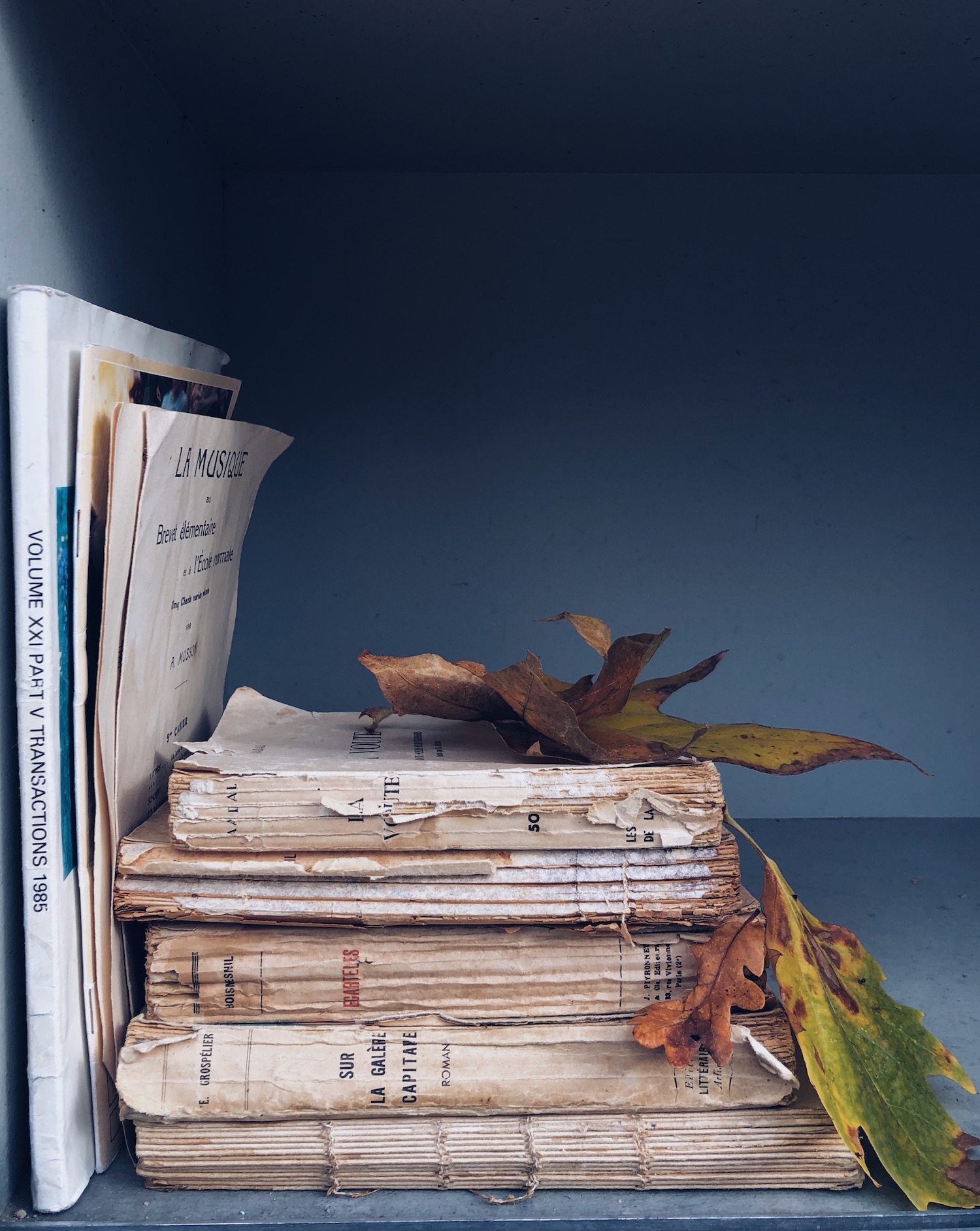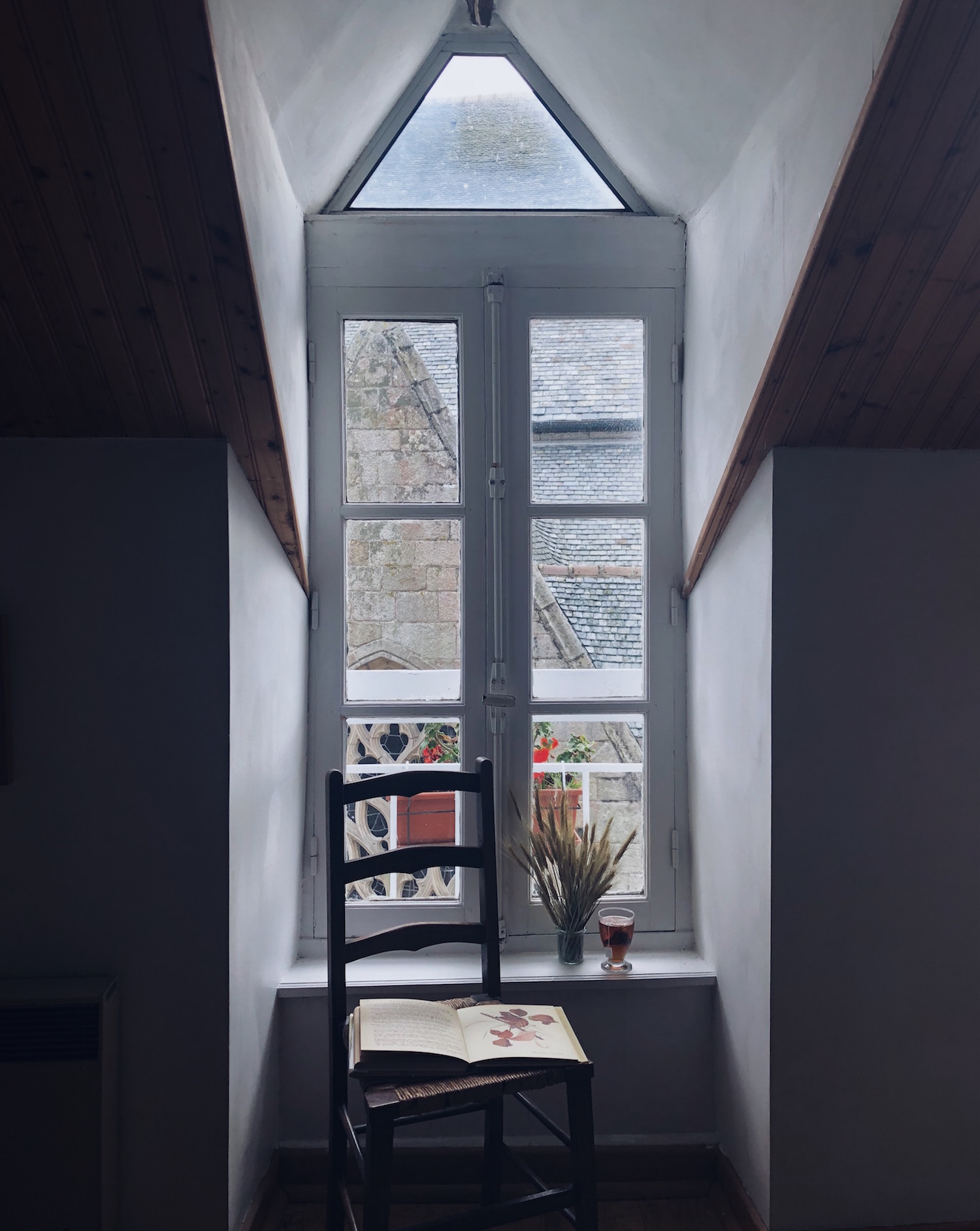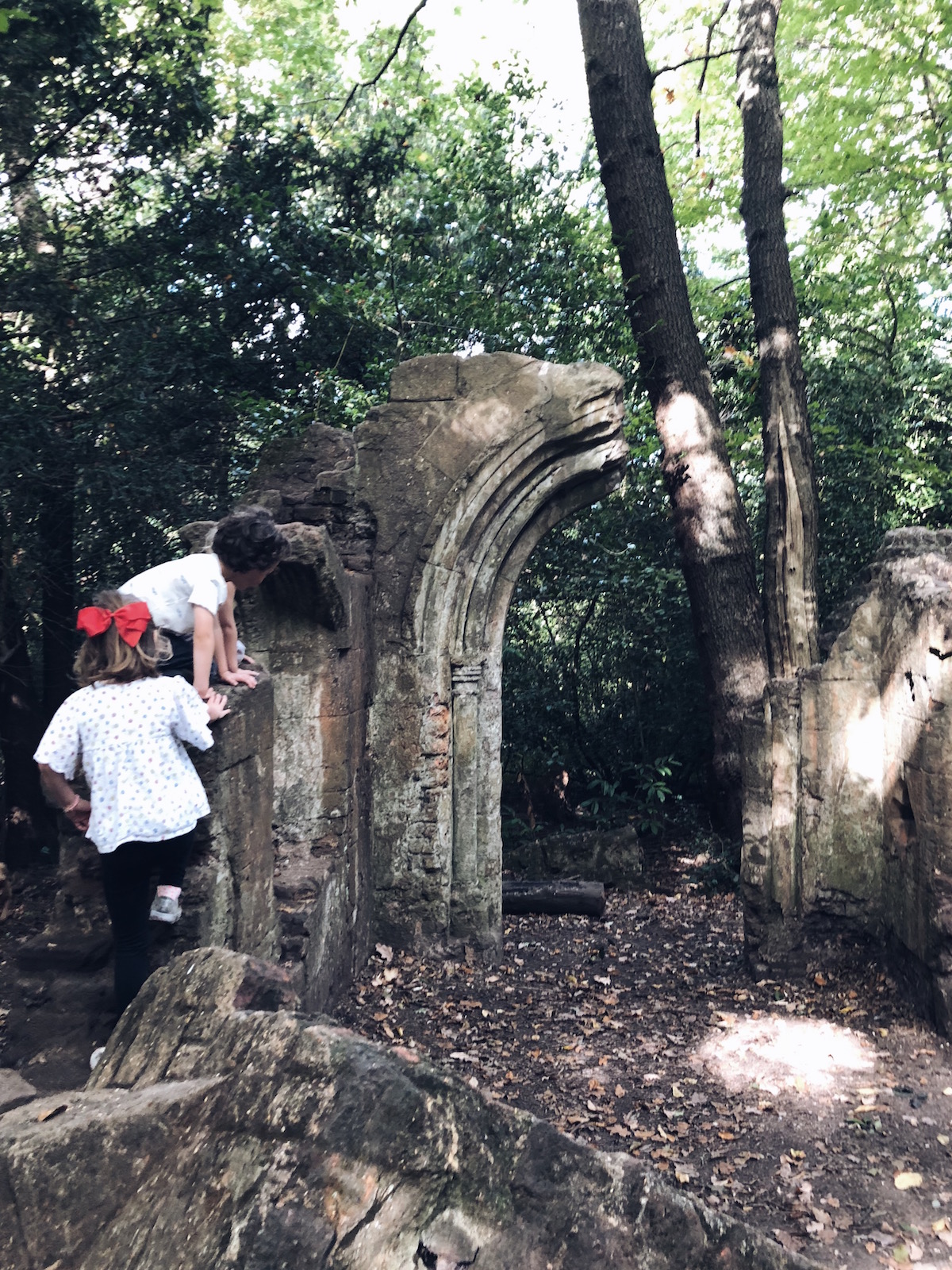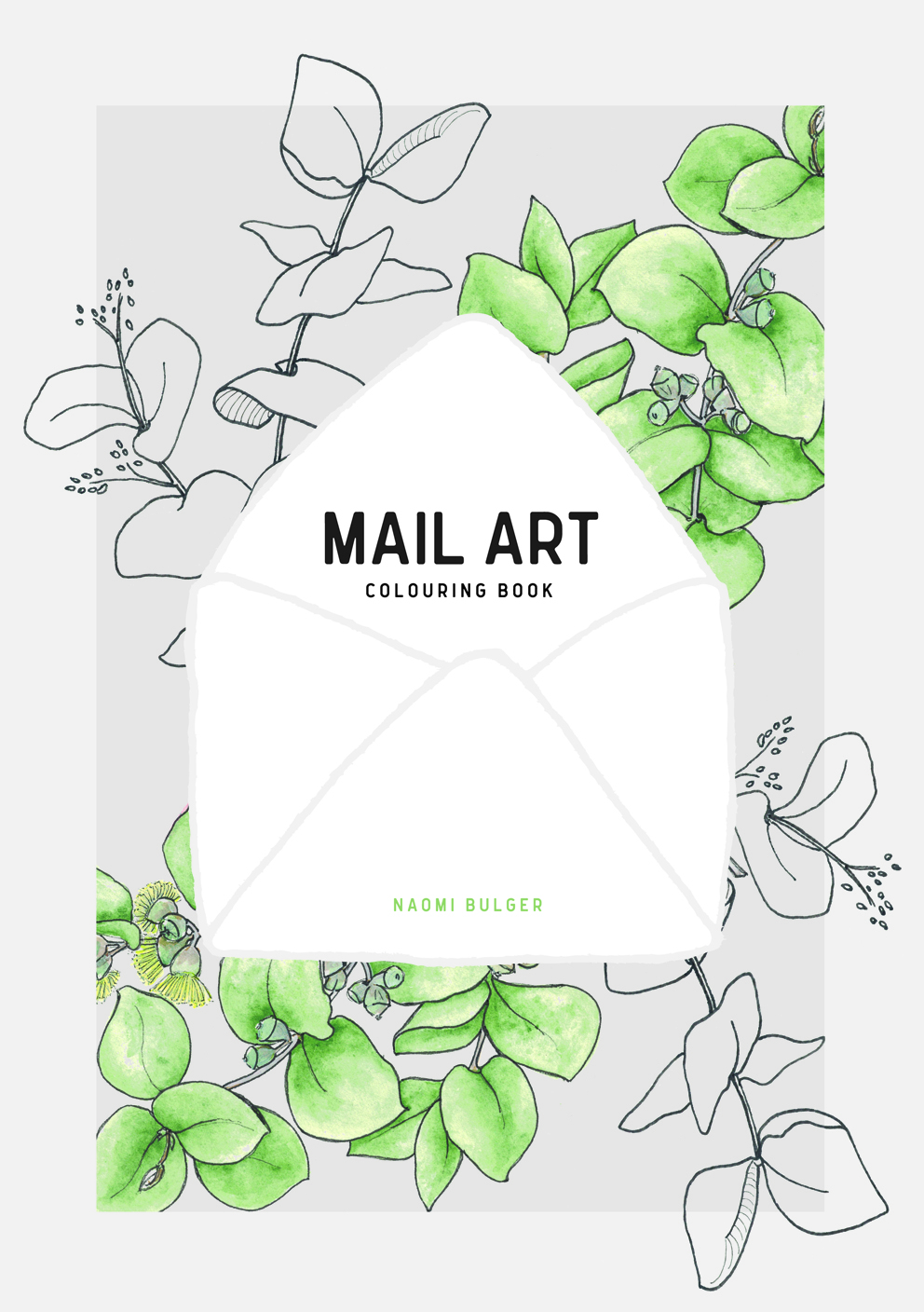
JOURNAL
documenting
&
discovering joyful things
Ode to doing nothing
In the beginning, the silence is uncanny. You can’t hear anything at all, not at first. But you have to let yourself go completely still.
Then you realise there are birds in the distant trees. Nearby, a cicada calls. Then the wind picks up and trees begin whispering to one another, and now you can hear the creaks and cracks that are the growing pains of the ancient bush. Hidden rustlings of secret creatures, the crunch of bark underfoot, the hum of something winged buzzing just past your ear.
And you realise the silence is actually a cacophony, and that the empty landscape is a crowd.
We have been staying on a friend’s farm, in the Macedon mountain ranges about an hour outside Melbourne.
The fields at the moment are, appropriately, autumnal gold. They might be the freshly-shorn fields of an autumn harvest, but then again they might just be the visible remnants of a brutally hot summer. Either way they are, undisputedly, gold. And more beautiful than you could imagine.
Smooth gusts of wind make patterns in the grass in gold and sand, as though unseen gods are passing by and gently stroking their hands over the grass. As perhaps they are.
In the afternoon I take a walk through the trees and then sit down amid the grass to listen to the wind. One of the horses in the bottom paddock spots me and nickers hopefully, wanting carrots. I’m empty handed, but I walk across to him and stroke his soft nose, then bend and breathe into his nostrils, the way I was taught to do with horses when I was a child.
His earthy, honey-breath is achingly familiar, and I feel a stab of love for my own beautiful old horse, Starbrow. Did you know that horse-breath smells like honey? I used to sit in the grass in our own paddock as a teenager, and Starbrow would wander over to pass the time. I’d breathe in his honey-breath, and stroke his nose until his eyelids drooped and he fell asleep on his feet, with his head in my lap.
Those were days in my life when sitting still meant actually doing nothing. I wasn’t multitasking, I didn’t carry a phone, and I didn’t even own a laptop. The only ‘data’ I was consuming was the touch of the wind on my bare arms, the sound of lorikeets bickering in the trees behind us, the sandpaper prickle of the bracken where I sat, and the scent of this sleepy old horse with his head resting on my crossed legs.
On the weekend, we sat still again.
We sat in the shade of a tree beside the dam, while the children fed about twenty ducks that felt like a hundred ducks, three pushy ‘bin-birds,’ and one very courageous magpie. When the children were all out of food, the ducks retreated to the shade of a willow-tree on a little island, and Scout and Ralph retreated to our spot on the banks of the dam, where we all proceeded to do… nothing much.
Scout leaned against us and methodically worked away on the friendship bracelet she’d been taught to weave by the little girl at the Girl Guides stall at the markets that morning. Ralph emptied the bag of cars he’d purchased for $1 at the same market onto the ground, and began digging a dirt track in which to race them.
And Mr B and I talked. We talked like we so rarely get to talk these days, about nothing, which felt like everything. We told each other stories, shared jokes, made plans, and dreamed dreams. And as the afternoon slowly unfolded it felt as though we were rediscovering each other. Mr B and I are always good friends, but the roles we play throughout the day (our “jobs,” if you want to think about this in career terms) are so different from one another that we can easily go through life feeling more apart than we actually are. But that afternoon under the tree doing nothing was a reminder of how much we shared, in opinions and in ethics and in life, despite our separate daily experiences.
It was a lovely gift, and something we could only have experienced because we gave ourselves permission to do nothing. In that afternoon, I felt a rush of affection for the man I married.
Right now I’m working on an article for a magazine, and it’s about the way that building “white space” into our days can free up our creative ideas and inspiration. Or, to put it in terms I heard at the My Open Kitchen gathering last year, “While ever you are consuming, you are not creating.”
It’s a subject I teach on and a subject I’ve been researching for this article. But sometimes we have to live something, don’t we, before the lesson can move from head to heart. Finally - finally - on the weekend, I stopped. At least for a little while. And I learned my own lesson.
White space - boredom - unplugging - stopping - doing nothing… no matter what you want to call it, it’s the stopping that can kick-start the new beginnings. In creativity, in ideas, in love, and in life.
Wouldn’t you agree?
All the light we see
As the days grow shorter I find I am following the light around our little apartment, seeking moments of calm in a sun that illuminates but does not burn. In the afternoon, the light slants through the dormer windows and over the table where I paint, creating patterns and shadows that are as real as they are transient, and breathtakingly beautiful.
I sit by the window and make notes in the little ‘field notes’ notebook with a blackbird the cover that I picked up at the Horniman Museum gift shop when we were in London in September. As for so many other people at this time of year (maybe you?), my thoughts are turning to introspection, a kind of ‘life stocktake of 2018’, if you like, alongside all my hopes, dreams and plans for 2019.
When it comes to ‘hopes, dreams and plans’, the key challenge I find is deciding where to put my energy. I have been guilty (and I’m sure I’m not alone here!) of taking on way too much. And as I don’t like to do anything half-hearted, I throw myself into all the things and all too often end up exhausted, burnt out, and unable to be present for my family in the way I want to be.
Do you relate?
Certainly, the first half of this year looked like that, but this extended stay in France has helped give me the mental white-space I’ve needed to see things with a little more clarity.
For example, with the clarity of emotional distance, I can look on our French sojourn as the cumulation of all those missed holidays and breaks. Aside from one week in Tasmania 18 months ago, I have not taken a break since I fell pregnant with my daughter in 2011. I worked up until the day before both of my children were born, and was back at work when my daughter was only six weeks old, and my son only three weeks old.
Of course, I work from home, so it’s not as though I’ve been in the office for all that time, and my hours equate to part time. But working from home means it’s almost more difficult to switch off, and the lines between work and family blur even further. And the rest of the time is taken up with those not-insigificant hours of cleaning, cooking, administering and nurturing to my little family. As much as I enjoy work and parenting none of it feels like a break!
This stay in France has been like a recuperation period, a chance to finally stop and rest and reflect and play. If I’d been sensible and taken two or three weeks a year during the past six years for holidays, they would have added up to the same amount of time out, but maybe just maybe, I could have avoided the sense of overload and overwhelm I’d been experiencing in the lead-up to this trip. (I suspect there’s a lesson in there for me somewhere.)
So now I sit by the window in the weakening light and sip my tea, and make notes in my blackbird notebook. Everything I’ve been doing, work-wise, this year. What’s working for me, and what isn’t. What feeds my soul and supports my family, and what detracts from soul or family (or both).
And I write down all those plans. So many creative dreams, all of which I am eager to sink my teeth into. Finally releasing that snail-mail book. A podcast about meals in the mail. Another colouring book. An illustrated year-book. A collaboration on sustainability that I’ve been invited to take on. A charity cook-book. Weekend intensive workshops for students. Postcard and zine projects. Stationery kits. Seed packets. Finally learning pottery. And how to crochet.
My first instinct is to take on ALL the plans, and pile them on top of everything I’m already doing. But in the calm and quiet sunshine of this much-needed time out, I can see more clearly. Looking down at that notebook, I can see projects that I loved this year but that didn’t serve me or my family. I can see creative ideas that I know I’ll love but that won’t serve us in 2019.
Slowly, I am paring back and choosing favourites… and choosing health and family and joy as well as, well, sheer productivity.
It’s easy to see a holiday as a great indulgence. Maybe it’s a vestige of the Protestant Work Ethic, but both my husband and I find it hard to stop. If one of us doesn’t work at night after dinner, the other one exclaims in surprise, “Oh! No work tonight!” and within the celebration of freedom there’s also an unspoken undercurrent of, “Must be nice to lead such a leisurely life.”
It’s time to reset. We both need to stop glorifying ‘being busy’.
Instead, I want to structure my days like the farmers of old. Work hard all day. Stop for a proper lunch to gain sustenance and energy for the afternoon ahead. After dinner, enjoy a well-earned rest: read a book, paint, watch TV, play board-games, write letters, crochet… in other words, leisure. Earmark at least one day each weekend for family and no work.
And once a year, while the earth sleeps (aka quieter times at work), take a break. Nothing necessarily as grand or expensive as an overseas trip (although wouldn’t that be lovely!), but ensure a deliberate, physical separation from work and obligations, to rest and reset.
These thoughts are all scribbled down in my notebook, in jumbles and pieces side-by-side with shopping lists and plant-doodles and wifi keys from the various places we’ve stayed. As I read over them before the light fades, I realise I may be making changes in 2019, bigger than I’d anticipated, pivoting again. And it feels good to finally begin to see.
Trees and butterflies
We are searching out forests wherever we go, following paths that lead to unknown places. On this side of the world they are green and gloaming, not dry and dust-filled like the bush of my childhood. I like to kick my shoes off whenever I can, feeling the hum of the earth beneath my toes.
“Humph. Mum’s grounding again,” Scout complains. It is strangely liberating to remember, as I stand, that there are no deadly snakes or spiders lurking in the fallen leaves or hiding under rock and bush. Instead, we find…
conkers
chestnuts
blackberries, small and sweet
butterflies
crumbling ruins
whispering winds
acorns
wild apples
red-berried holly
rose-hips
(and once, something unseen that growled from behind brambles)
Inside these woods the fairytales I grew up reading seem much closer. It is easier to picture Hansel and Gretel or Little Red Riding Hood growing lost in these dark corridors, than in the brighter trees of my own remembering.
Of course, there is a hot, clean beauty to the Australian bush, too. The crunch of leaves and march of busy ants beneath my feet. The expansive shade of eucalyptus trees, whose baby leaves can be stretched and made to whistle a tune; bright flashes of bottle-brush in bloom; prehistoric, towering cathedral-ferns; and the eerie, dead-bone rattle of black wattle in the breeze.
Trees are trees and they love best to be together: when you find them gathered, on any side of the world, there is life and beauty to be found. But I am ever-drawn to these northern forests. I long for darker, cooler, deeper woods, and I hope I never quite unravel all of their mysteries.
I have a little theory that I like to play around with in my head sometimes, in that half-awake time in bed before sleep. It is undeveloped and unsubstantiated, truly just a theory, but I find it oddly comforting.
(I wonder if I subconsciously came up with this theory as a way of excusing or apologising to myself and my parents for not feeling more in love with the landscape and climate of my homeland, Australia. I have never felt properly at home in it. This seems unfair to a land that has given me so much, and that is so intrinsically beautiful, and I can’t explain it in any logical sense, which might explain the theory.)
It goes a little something like this…
Every year in autumn, millions of monarch butterflies fly thousands of kilometres south from the US-Canadian border to Mexico, only to head north again come spring-time. The fascinating thing is that given the life-span of a butterfly, five generations live and die in the interim. When it’s time to embark on their journey home, not a single butterfly alive has done it before. There is no-one to lead the way, not even anyone left to tell them about it. And yet their sense of direction is so accurate that every year they return no only to the same area, but often even to the very same tree that once was home to their great-great-great-grandparents.
The butterflies navigate by using a sophisticated combination of the sun’s position in the sky, and their own biological clocks. This is the idea of cellular memory, something deeper and more physical than our neurological memories: memories or associations that are imprinted, instead, into our very DNA.
If you speak to many Aboriginal or Torres Strait Islander Australians, you will hear something along similar lines, although often using different language. The land belongs to them and they belong to the land, and no amount of dispossession and destruction at the hands of us immigrants can change that deep reality.
But I am not Aboriginal or Torres Strait Islander, and I fear this hot and harsh and beautiful land does not belong to me, nor I to it. I am like a monarch butterfly, turning my antennae toward the homeland of my grandparents. Surely, in all the hundreds and thousands of years that my ancestors lived and loved on the other side of the world, right up until two generations ago… surely there is something of that in my DNA that could explain why I feel such a powerful and incessant longing to go north?
Or at least, that’s my theory.
Mindfulness walking
Recently on our morning walks to school, Scout and I have started practising what we call 'mindfulness walking'. Essentially, it is paying attention to our senses while we walk, rather than allowing the path to roll away underneath our feet, unnoticed.
It starts when I ask a simple question: "What can you see?"
We get all the obvious things out of the way first: trees, cars, houses... but then slowly we start to really notice what is around us. A man carrying what looks like a very heavy stack of metal poles, on his shoulder. The way the wind makes the leaves on a gum tree in the middle of a roundabout sway like a dance. A cloud that looks like an elephant wearing roller-skates.
I ask, "What can you hear?" We walk a little further, hand in hand.
A drill from a nearby building site, passers-by talking to one another. A flock of birds that swoops past, screeching. We continue walking. "I can sort of hear the wind pushing past my ears," Scout says. I say, "I can just hear our footsteps." We start to notice other things: the hum of an air conditioner on a building, a helicopter in the distance, the clanking of unseen dishes inside someone's house, the soft whoosh of bicycle tyres as they pass us by.
I ask, "What can you smell?"
We smell car exhaust and the tinder tang of fired metal on the building site. Fresh coffee. A garbage bin. We stop and crush leaves between our fingers. "Lemon!" cries Scout. And then of another, "Um, kind of herby?"
Mostly we are at school by now but if there is time, I ask, "What can you feel?" The way the ground under our feet changes from smooth footpath to uneven cobblestones to sand to spongy grass. The warm sun on our faces. The cool breeze making goosebumps rise on our arms. The fabric of our clothes: is it soft? Or scratchy? A pebble in my shoe. School bag straps chafing shoulders.
Of course this is more than a pleasantly curious way to pass the time. What Scout and I are practising on these walks is mindfulness in its most basic and simple of forms. We are simply paying attention, without passing judgement. And there is something rather special to be said about paying attention, being present in the moment, and indulging in some good, old-fashioned curiosity.
There are loads of benefits to practising mindfulness and I'm sure you've heard them before. Things like reduced stress, improved memory, better focus, and less emotional reactivity. But what these walks are also doing is giving our brains some exercise in the area that houses the 'salience network,' a network of brain circuitry that helps us decide what to pay attention to, and what to ignore. This process is called 'latent inhibition' and it just so happens to have a big impact on creativity, an area in which I work and teach.
Latent inhibition is our subconscious deciding what, from the cacophony of sensory stimuli that we are exposed to in any given second, to take in, and what to ignore. Imagine if our brains gave equal weight to everything we saw, heard, smelled, touched and tasted, at the same time, all the time. The world would be almost unbearably loud and bright, something I imagine akin to standing in the middle of the traffic in the middle of New York Times Square during rush-hour (and possibly just as deadly). I've heard that some research studies have linked a reduction in latent inhibition to psychosis, and that doesn't surprise me one bit.
On the other hand, a conscious, deliberate, mindful reducing of our latent inhibitions, during something like a mindfulness walk, can be powerfully beneficial. A research study of individuals with high IQ scores found that those who were also classified as "eminent creative achievers" were seven times more likely to have low, rather than high, latent inhibition scores. As the researchers put it, people who were less likely to classify sounds or objects as irrelevant were at an advantage when it came to producing creative, original content.
So by the simple act of paying attention during a walk, Scout and I are exercising our brains, and giving them permission to notice and give relevance to our surroundings. This in turn leads to more creative thinking in all areas of life, from artistic expression to problem-solving and innovation.
(Side note: speaking of paying attention, here is something I have noticed in the picture above. Because of the time of day, the shadows were right in front of this gardener and you can hardly see them. Look at her feet. Does something seem wrong? No shadows! It kind of looks like I have photoshopped her in from some other picture, and failed to add in grounding shadows. I didn't, this shot is unedited, but it is driving me crazy. For people who ask me about painting tips, this is why shadows - even soft ones - can make a big difference to a scene.)
After my mindfulness walk with Scout this morning, I decided I would write about it, so I kept my iPhone out to take some pictures of things I noticed, too, during my solitary walk to pick up the mail and get my morning coffee. At one point, I leant across a fence to photograph some beautiful, peeling paint on a brick wall (something I had walked past more than 100 times before and never properly noticed) and, as I leaned, I accidentally crushed some rosemary. The honeyed, herbaceous fragrance instantly lifted my spirits, so I picked a sprig and carried it with me the rest of the way.
What to do on a mindfulness walk
The next time you take a solitary walk - or a walk with the children if they are willing - take at least some of that time to try a deliberate mindfulness practise. Here are some ideas to get you started:
1. Bring a piece of paper and pen with you, and start recording things. List 10 things you can see, 10 things you can hear, 10 things you can smell, and 10 things you can feel. There probably won't be 10 things you want to taste, but don't let me hold you back if that's your thing! I have made a pretty worksheet for this exercise that you can download here if you'd like it.
2. Take a camera and go for a walk to see what you can see. I have been recommending this as a tool for overcoming creative block for years. There is something about the combination of exercise, a change of scenery, and exercising creativity in a different kind of way that can often be just the break your brain needs to unblock whatever was stopping you in your project. Walking with a camera can also be a beautiful way to practise mindfulness, because you are more likely to notice things. Really pay attention, and make the effort to capture what you see. Think about light and shadows and details. Crouch down to get a different perspective. Zoom in closer for some detail. Look for unexpected shapes in building angles and white space.
3. Make a mini-movie by recording one-second videos every minute or so on your walk. Then when you get home, edit them together. You will be amazed, once you start recording, the sounds and sights you hadn't noticed until that moment. Possibly when you watch your edited movie back, you will also realise there were other things going on at the time (a woman pushing a pram on the other side of the road while you were filming a letter-box; a bus starting up from around the corner while you were filming a bird singing) and that will help you be even more mindful the next time you go walking.
4. Just before you go for your walk, use your phone (or any other device) to make an audio recording of your walk. You don't need to do anything with this recording - you can even delete it as soon as you're done - but the very fact that you are recording will heighten your awareness of the sounds around you, and help you to pay attention. The bang of the front door as you pull it shut (even the click of the lock), a magpie warbling, the squeal of car tyres somewhere in the distance, bees on a bush, a baby crying, snippets of conversations.
I would love to know if you find these ideas helpful, or if there is anything similar that you do in your own life, that others could benefit from knowing. What do you think?
Horizons (+ podcasts for creatives)
Somewhere on the road in between Swansea and Binalong Bay, as the past four days of clouds scuttled out to sea and the tiny coastal towns rolled away behind us in fresh new sunshine, my own horizons began to open up, too.
Because, of course, holidays are as good for the mind as they are for the body. Bogged down in the everyday needs of meetings and deadlines and parenting and just, well, life, I couldn't see the path forward, and I had no idea what to do. I was so desperately unhappy in the work I was doing, but my financial obligations to my family meant I didn't have a whole lot of choice. Writing was the only thing I knew how to do that would earn me a 'real' income, and copywriting was the most reliable way to earn that income, but boy was it taking its toll. I was bored, tired, uninspired and unenthusiastic, and resented every second I gave to that work, which took me away from my children and from doing the creative things I loved.
But as the road unfolded in front of us and the children slept in the back seat, the salt air began cleaning away all that resentment and I began to spy, in its place, opportunity.
Creative thinking needs space to breathe, and the road and the sea breeze and the early nights were just the space my brain needed break free.
I came home and did something radical. I changed all my work priorities around to pursue my passions of art, snail-mail, and slow-living.
First, I built a new website (the one you're reading now). Then I created an e-course about snail-mail, using some of the content from the book I'd been writing for the past three years. Against all my expectations, the course sold out. Not once, but twice, and there's already a waiting list for a third intake.
While that was happening, I sat up night after night drawing designs for a unique colouring book that contained more than 60 mail-art envelope templates. I launched the colouring book as a downloadable product only, and pre-sold more than 100 in the first week I announced it.
All of this was happening late at night and early in the morning, to work around time spent with my children and on the day-job. But in October, I finally made the decision to quit copywriting. Financially this wasn't the smartest move, but boy it felt good. I spent a whole day sorting out my office and shredding secure documents from past clients, and if I'd been burning sage it could not have felt more cleansing. Ever since that day, I've sat down in my office on those three official 'work days' while the children are in childcare, and I work on the things I truly love.
The income side of it is a bit messy. I illustrate for commissions. I make e-courses. I'm a TA for another online educator. I write magazine articles. I write books. I illustrate books. All of that adds up to the very bare bones, a lot less than I was earning before, yet I'm working harder than I ever have before. But every day, when I sit down at this little office, it is with joy.
I'm so full of energy and ideas that the day flies past, and when I stop work to go and pick up the kids it almost feels like waking up from a dream. Awake, and satisfied that I've given this work my all, I'm also in a much better place to give my kids my all. My time is all theirs and, again, it is with joy.
I have so many plans I don't know what to share with you first. Honestly I don't even know why I'm writing this blog post, other than that I just feel so free and happy to be working so hard on what I loved, that I wanted to share. And I want to thank you for reading this blog, and for supporting me in so many ways.
Whether its buying my courses or products, reading my blog or newsletter, commenting to let me know you're there on Instagram, or in myriad other ways, you are the community that has kept me going. You've told me what you liked (and didn't like), what you wanted, and how you wanted it. You inspire me every day to make and give away new things, and I'm just so grateful for the support and inspiration.
Here's to new horizons. Here's to you!
ps. At night time in Tasmania, while the children and my husband all slept, I started listening to podcasts to find inspiration and practical ideas for turning what I love into the way I make my living. I'd make a cup of tea, put in headphones so I wouldn't wake my family, curl my feet under a chair in our holiday house, and listen in. It felt like private coaching from a whole host of experts, right at the time I was dreaming about a new way forward. I've shared my favourites of those podcasts here, in case you're searching, too.
Podcasts for creative people in business
Courage & Spice: the podcast for humans with self doubt
by Sas Petherick
The blurb: "If self-doubt is holding you back in your relationships, career, creativity or your business, Courage & Spice is especially for you. You’ll find inspiring conversations about all things self-doubt – including real-life stories and research-led approaches to help you navigate through it."
Explore Your Enthusiasm
by Tara Swiger
The blurb: "Let's explore what it takes to craft a sustainable, profitable, FUN business, while staying enthusiastic and motivated. Whether you just opened your first Etsy shop, or you've been selling your art, design or writing full-time for years - you struggle with doubt, loneliness, motivation and getting it all done. In this podcast we'll explore what you REALLY want from your small business so that you can follow your enthusiasm, make your art and make money. Each episode is a mini-lesson in exploring what you want out of your OWN business, so that you can craft a life and business that fills your life with enthusiasm."
Hashtag Authentic - for Instagram, Blogging and Beyond
by Sara Tasker
The blurb: "Want to find an audience online for your creative work? Hashtag Authentic is a weekly podcast exploring the secrets to online success for dreamers, makers and creatives. With practical tips and inspiring stories, Sara Tasker of 'Me & Orla' guides you through the lessons and strategies she used to grow her 250k+ audience and six-figure business online. Tune in every Wednesday for analysis and interviews with trailblazing creatives, for an insider's view of all things Instagram, blogging, social media and beyond. Hashtag Authentic will equip you for the online world, dose you up on inspiration & information, and help you find your online tribe."
Make it Happen: a podcast for big hearted creative business owners
by Jen Carrington
The blurb: "Make It Happen is a podcast for big-hearted creatives who are ready to build an impactful, fulfilling, and sustainable creative life. Brought to you by Jen Carrington, a creative coach, this podcast is for you if you're ready to make things happen in your creative work and life on your own terms, in your own way, and by your own rules every step of the way."
My Open Kitchen
by Sophie Hansen and Skye Manson
The blurb: "My Open Kitchen is a podcast celebrating great stories from behind the farm gate, inspiring people, seasonal produce and the power of social media to help us all connect, collaborate and build communities."
Soulful PR Podcast
by Janet Murray
The blurb: "Learn how to get PR for your business that will help you grow your email list, social media followers and your client list. If you’re an entrepreneur wanting to get coverage in newspapers, magazines, and on radio & TV, tune in every Friday for insider tips and easy-to-implement strategies from award-winning Guardian journalist Janet Murray. You’ll hear inspiring interviews with entrepreneurs who are using traditional PR alongside blogging, webinars, email marketing and social media platforms like Facebook, Twitter, Pinterest, Instagram and Youtube to attract leads and grow their business."
The Membership Guys Podcast
by Mike Morrison
The blurb: "Weekly episodes containing proven, practical advice, strategy and tips for planning, creating and growing a successful membership website."
Pursuit With Purpose
by Melissa Griffin
The blurb: "I know first hand that it's way too easy to slip into the rat race of competition and comparison. In 2016 I hit my first million-dollar year in my business... yet, I was totally miserable. At the time, I was focused on numbers and status, rather than what would actually bring me real happiness and create an impact on the world. That all changed. This podcast is about my journey to meaning and fulfilment and how you can bring it to your own life - today and every day."
14 ways to boost creativity and find inspiration
These are some of the things I do when I'm stuck, stumped, confused, de-motivated, or just facing some kind of creative block. I thought I'd share them, in case you want to try, too.
You probably have a hundred more. If so, I'd love to hear them!
1. Create white space in your life, time in which you are doing nothing, or doing manual non-thinking labour (walking to the tram stop; in the shower; washing up; weeding the garden). Don’t listen to podcasts or music or anything, and let your brain rest and wander without agenda
2. Seek inspiration: go to a gallery, listen to music, listen to a podcast, read a good book (not a blog, a real book). Social media is good but also prone to trends that we can get sucked into - try to look further afield than the Internet
3. Take a walk with a camera. Even if you’re not a photographer or creating visual art, looking at things through a camera lens creates a different perspective and helps unlock creativity in your brain for other projects
4. Get a good night’s sleep. I know, sometimes that's easier said than done, but it’s hard to think creatively when you’re tired
5. Get a second opinion. Ask someone who you admire creatively (and who you trust to be constructive) to look at what you’ve done, and brainstorm ideas or opportunities. OR share what you’ve done on social media and invite feedback (but only if you feel this is a supportive community for you)
6. Try something different. If you usually like to paint, learn a language instead; if you like to write, take a cooking class. It's the creative part of your brain's version of "a change is as good as a holiday"
7. Do it for the joy of it. The pressure of deadlines, income, other peoples’ expectations, can all get in the way of creativity
8. Get some exercise. Even just walking regularly can help but, according to research, the key word here is regularly
9. Avoid social media distractions. Take a few hours away from your phone every day - maybe even put it in another room. If you can’t help yourself, remove social media apps from your phone
10. Write down your ideas, thoughts and feelings by hand. This prompts “reflective functioning” because it causes you to both feel an experience as you write it down, and then reflect on it, or make sense of it, when you read it back. I don't know why, but this is a lot more powerful when you write rather than type
11. This idea comes from the Me & Orla "Bloom and Grow" Instagram course. Create a Pinterest board of things that inspire you. Or several boards, if you like. Whenever you come across an image or idea that you like, or that sparks your curiosity, pin it to your board. Then at any time when you are looking for ideas, you can revisit that board for creative inspiration
12. Collaborate - once when I was trying to write a character of an old man, I asked an actor friend of mine to role-play the old man so I could better brainstorm ideas
13. What else is going on in your life? The stresses and trials of life - children, work, finances, an argument with your spouse... all of these can temporarily block creativity. Be kind to yourself. sleep on it, do what you need to do first. Have faith that inspiration and motivation will return and, when life calms down a little, try one or more of the techniques above
14. Carry a notebook and pen with you everywhere so that when inspiration does strike, you can capture it before it slips away
Alright that's me for now. What do you do to boost creativity and inspiration?
ps. I've made this list downloadable in case you'd like to print it off and take it with you. You can download it here. And of course don't forget you can always pin it for later. x
ps. have you heard about my new letter-writing and mail-art e-course?
Over four weeks, I will guide you through multiple methods of making beautiful mail-art and creative, handmade stationery; teach you the art of writing and storytelling; help you forge personal connections in your letters and find pen-pals if you want them; and share time-management tips so even the busiest people can enjoy sending and receiving letters. Register your place or find out more information right here.
Five senses
For your ears:
Image credit: My Open Kitchen
The podcast My Open Kitchen. Oh my goodness! I only discovered this podcast very recently, when they (so kindly!) mentioned my blog and #mealsinthemail project in their Top 5 list on Episode 8 of Season 2. After I listened to that episode, I literally went back and listened to every episode of both seasons. The My Open Kitchen podcast is supposedly for primary producers - country growers and makers - but I live in the inner city and I still absolutely adore it. It's about slow-living, food and baking, gardening, and creative ways to connect and communicate through social media. If that sounds up your alley, scroll down the My Open Kitchen podcast and blog to find the show notes for each, which are full of useful links and also enable you to listen in (or of course you can subscribe in the usual ways on Androids and iPhones). Strangely, listening to this podcast has even helped me make my peace with the imminent arrival of spring and summer. Sort of.
Also, an honourable mention has to go to Sara Tasker's podcast Hashtag Authentic, which re-started this week with Season 2. I included it in a previous podcast roundup, but just had to mention this week's episode, which was an interview with Tara Mohr. I always love Sara's podcast but didn't expect my response to this episode: I was in floods of tears while sorting the socks, and felt like a light came on inside my head about why I had been feeling and behaving certain ways. It's as though I saw things I couldn't un-see, and now I'm super motivated to take action!
For your eyes:
I have two great reads to recommend today. The first is a cookbook by a lovely New Zealand lady with the enviable name of Amber Rose. (I mean seriously? Such a beautiful name!) The book is called The Wholefood Pantry and if you haven't come across it already, I highly recommend it. Basically, Amber takes us through how to make really wholesome, healthy, tasty pantry staples. The kinds of staples that most of us have bought from the shops for decades, but which can be made by hand and packed with so much more nutrition. Soups and broths, yoghurts, spice mixes, ferments, butters and oils, breads, jams... You get the picture! She also helpfully explains the why of using these ingredients and making these staples from hand.
My second recommendation is Lunch Lady magazine. Probably you've already come across this Australian quarterly beauty but, if not, it is such a wonderful read. I have every issue and look forward to it with ridiculous, childlike excitement. Even the typography and graphics are cheerful and somehow welcoming, like a hug. There are quirky and nutritious family recipes; essays from parents that have made me laugh, or cry, or both; and fun, accessible, family-friendly activities. Like edible garden tips, how to make coloured pasta, a guide to mushroom foraging, and common trail signs used by woodmen and campers.
For your mouth:
Of course, that has to be Meals in the Mail right now. As I finally read through all the letters and recipes that people have sent me, my heart just swells. This project is about food but it's about more than food: it's about what that food represents - comfort, love, nostalgia, community... And this project is about mail but it's about more than mail: it's about connections, and travel, and cultures, and art, and the love, care, generosity and permanence of writing things by hand.
Budget-wise I don't quite know how I'm going to make this book happen in a way that celebrates it the way it should be celebrated. I had counted on 20 to 50 recipes and stories, which I was going to photocopy and bind. Now I have more than 200 recipes and stories, many of them illustrated, as well as the beautiful envelopes they came in. The cost of printing this book is going to be considerable, and I am as short on the time it takes to successfully run a crowd-funding campaign as I am on the cash to just do it myself. However... I am determined to make this happen, and to make it as beautiful as I can see in my mind that it will be. I have my thinking-cap on. Watch this space!
For your nose:
Even the simple act of breathing in deeply, and exhaling fully, is like a mini-meditation. You can feel your body relax. And now for the flavour - take a wiff of these:
- Pick a sprig of mint or rosemary and crush it in your hand
- Coffee in the morning
- Stand near the ocean, close your eyes, and inhale
- Bake bread. I once read a quote somewhere saying that parents of small children should bake a loaf of bread every morning: even if you get nothing else done that entire day, you'll have delicious bread to eat, and the whole house will smell great
- Bury your nose into an old book
- Go stand in the garden when it rains
- Tip-toe into your sleeping kids' rooms before you go to bed, kiss them, and breathe in the smell of their warm hair and skin
For your hands:
Have you heard? I've made a downloadable colouring book!
On the one hand it's a traditional colouring book, the kind you'd turn to for a spot of creative expression, and mindfulness. But what makes it different to most other colouring books out there is that every one of the illustrations is designed as an envelope template, so you can make it and post it off when you've finished.
The idea is that this colouring book is not just for you, but for the people you care about, who will be surprised, touched and thrilled when they receive your colourful mail-art in the post.
The downloadable colouring book will be available in October, in time to make and send mail-art for Christmas, Thanksgiving, or any other end-of-year mail you'd like to send. There are 60 illustrations, and the book is available for pre-sale now (currently on special for $17.95, down from $23.95, until Monday 11 September).
8 autumn-winter plans
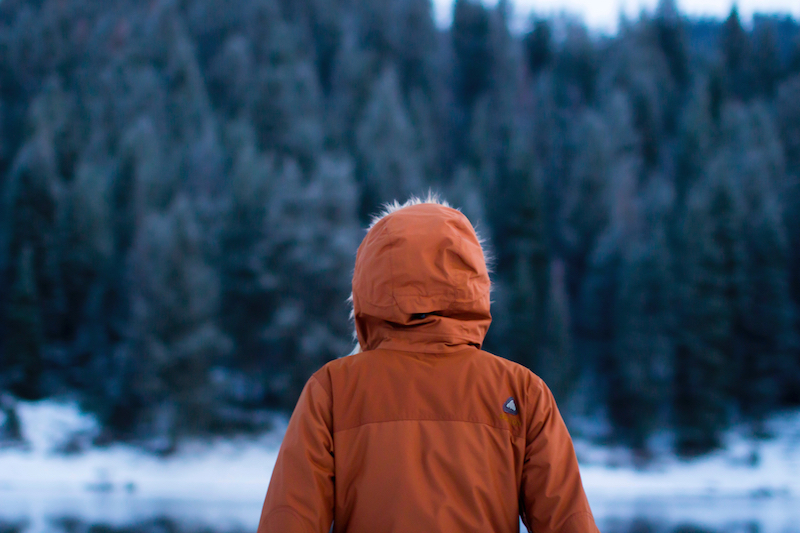
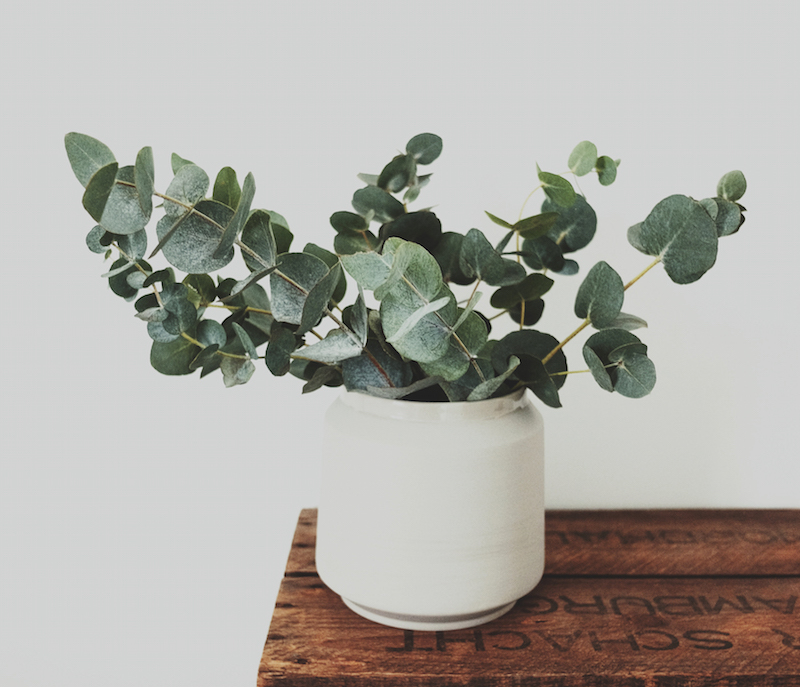

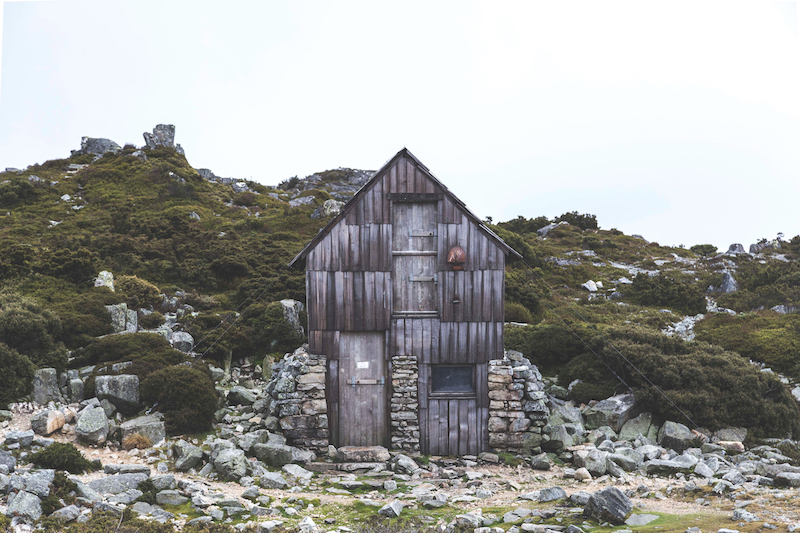
It's no secret that I love winter. I am no friend of heat and humidity, but I love the sting of cold on my cheeks, and the sight of my breath in the air in the morning.
I also love crocheted nanna-rugs, hot chocolates, bed-socks, mac-n-cheese, and flannel shirts. I like hiking up mountains or along city streets without breaking a sweat, the smell of wood fires after dark, candles at dinner-time, and lazy bubble-baths on weekends.
After what felt like the longest summer in the history of all the summers, we are finally seeing the start of autumn. So, just in case this is also the shortest winter in the history of all the winters, I have made some plans to make the most of the cooler months.
1. Learn how to bake bread really well. I've enrolled in a bread-making class at Abbotsford Bakery next month that I'm really looking forward to
2. Take the children to see snow
3. Go bushwalking. Now that the hot weather has gone and the snakes are asleep, I want to get back out among the trees
4. Forage for wild mushrooms in the pine forest. There are guided tours that take you on these foraging missions, to be sure the mushrooms are actually mushrooms, not toadstools. I've been wanting to do this for ages, but nobody wants to come with me. Will you?
5. Take better care of my skin. One of the down-sides to winter is the damage all that dry air and internal heating does to your skin. When I lived in New York, I was great at using scrubs and moisturisers to protect my skin. I'm older now so it's even more important that I make the effort
6. Dig, prune and nurture. I keep a seasonal diary to remind me what needs to happen in my garden. In the coming months, that will mean formwork pruning of some plants, heavy cutbacks to others, sowing some seeds, fertilising, aerating the soil, and applying a thick mulch to protect it
7. Make friends with the slow-cooker. I tell myself I'll do this every year. This is the year!
8. Rug up and have a winter picnic. I'll pack thermoses of hot chocolate or tea, knee-rugs as well as picnic rugs, beanies, and candles or possibly a little campfire. We will find somewhere pretty, and our picnic will look like this
How about you? What are your plans for winter? What should I add to my list?
Image credits: Daniel Bowman // Siebe Warmoeskerken // Annie Spratt // Samuel Scrimshaw
8 podcasts I'm loving right now
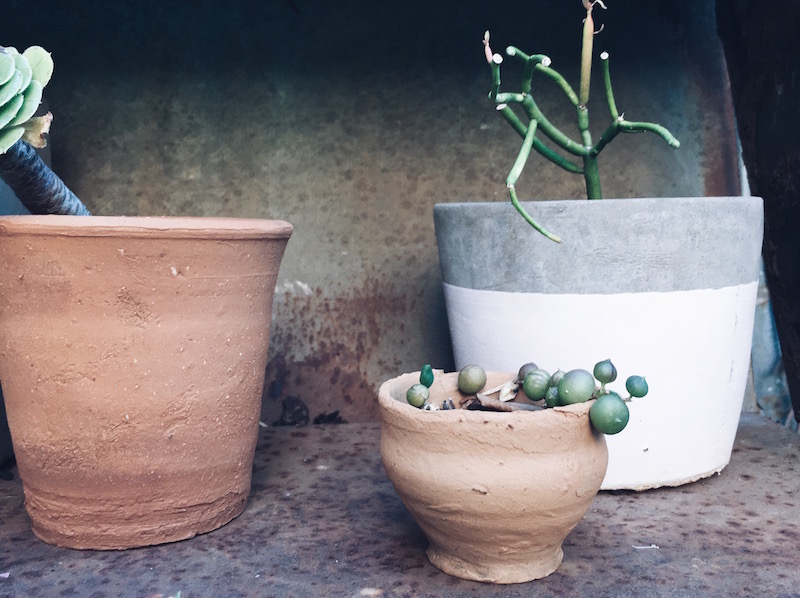 Do you listen to podcasts? When I do, I like to imagine I am living in the 1940s, getting information and inspiration from the wireless while partaking of tea and crumpets.
Do you listen to podcasts? When I do, I like to imagine I am living in the 1940s, getting information and inspiration from the wireless while partaking of tea and crumpets.
Sometimes I like to listen to podcasts while I'm painting, and also if I'm walking alone. If the kids are not around, I slip my phone into my pocket and put on a podcast while I'm doing the housework or cooking a meal.
Here are some of my favourites at the moment. Maybe these will be new to you, or maybe you know them already. I'd love to know what you listen to, so I can add your ideas to my download list!
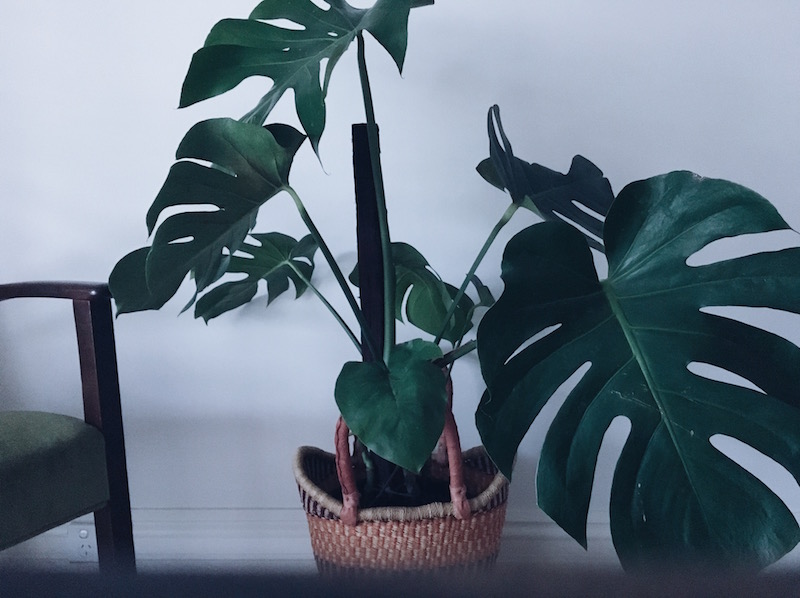
Hashtag Authentic - for Instagram, blogging and beyond
Host: Sara Tasker Frequency: weekly Why I love it: fantastic, friendly advice and encouragement not only for people who use Instagram, but for anyone who is doing something creative and putting their work out there for the public eye (get it here)
The Slow Home Podcast
Host: Brooke McAlary Frequency: every few days Why I love it: really practical ideas and advice for "slow-living" in a busy world. By slow-living, Brooke is really talking about a more mindful and purposeful way of thinking and experiencing life (get it here)
Serial
Host: Sarah Koenig Frequency: weekly, while the season is running Why I love it: each season (we are about to start the third season) is an in-depth investigation into a modern mystery. It's really fantastic story-telling that unravels week by week (get it here)
TED Radio Hour
Host: Guy Raz Frequency: weekly Why I love it: I feel smarter just listening to this podcast. All those fascinating topics you love about TED Talks, but adapted for radio. They pick a theme, and then play portions of various TED-talks as well as interviews with the original speakers, to tease out the theme from different angles (get it here)
Sweet Teen Club
Hosts: Stacey Roberts & Carly Jacobs Frequency: weekly Why I love it: 90s pop culture nostalgia. Allllll the nostalgia. Buffy! FRIENDS! Clueless! Reality Bites! Sweet Valley High! Tamagotchi! (get it here)
Magic Lessons
Host: Elizabeth Gilbert Frequency: weekly Why I love it: it's Elizabeth Gilbert in phone conversations with people everywhere who want to tap their creativity, but feel blocked somehow. She gives tips and encouragement to get past creative block, and then in a subsequent episode, speaks with another successful artist to gain further insights (get it here)
Unexplained
Host: Richard Maclean Smith Frequency: bi-weekly Why I love it: this podcast is cool and spooky and fascinating all at once. It explores modern mysteries, events that can't seem to be explained by our normal parameters of logic and science (get it here)
Good Life Project
Host: Jonathan Fields Frequency: every four days or so Why I love it: actually this podcast is hard to describe. It's inspiration and information on just "living a better life," whatever that might mean for you. It bills itself as "In-depth, unscripted, deeply-inspiring conversations and insights from acclaimed artists, entrepreneurs, makers and world-shakers." Yeah, that (get it here)
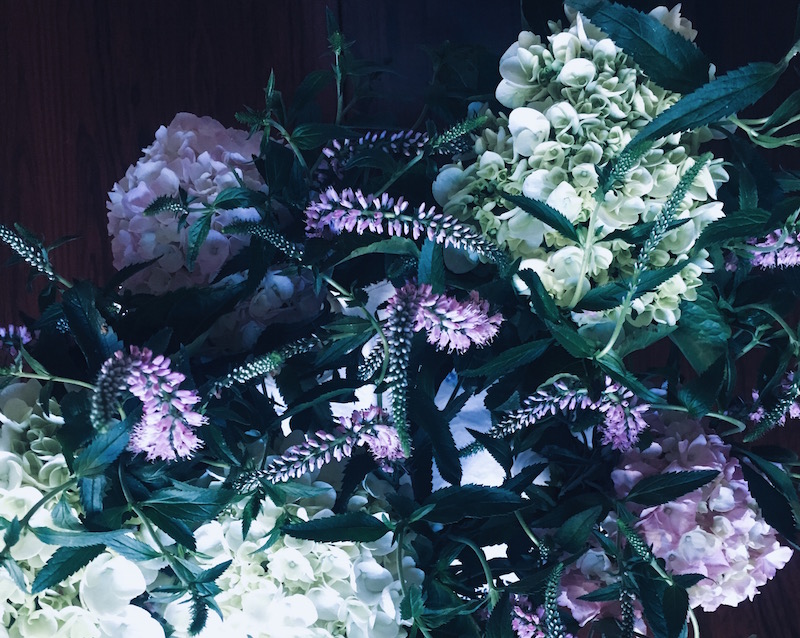
The honeybees and me

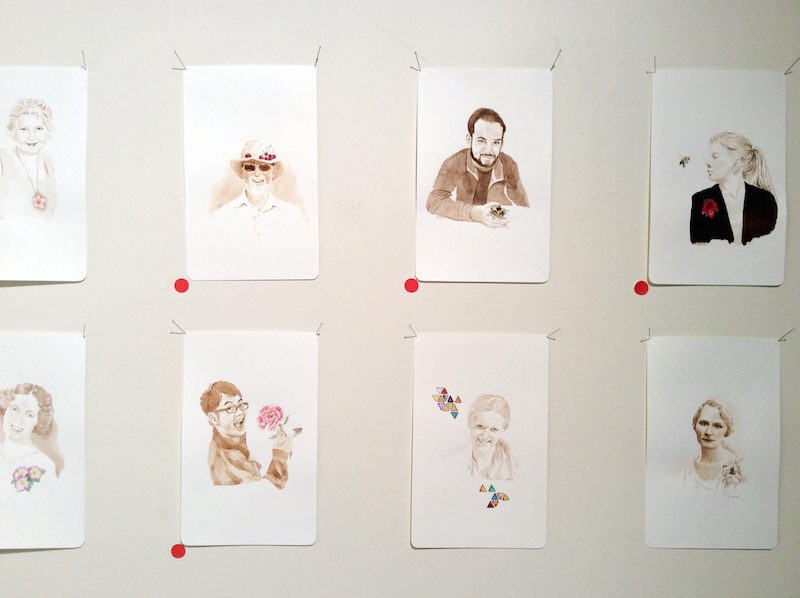
Oh hello. Look, that's me in the picture!
Recently I was approached by New Zealand artist Katherine Steeds to have my portrait painted. (I know - lucky me!) It was to be one of 50 small, sepia watercolour portraits (each about the size of a postcard) which, when exhibited together, would cluster and flutter on the gallery walls a lot like a friendly swarm of honeybees.
The exhibition was to be called "The Bee Appreciation Society AGM," and Katherine's purpose was to draw attention to the plight of the honeybee, globally.
You've probably heard the disturbing news that our pesticides are killing our bees. The National Geographic says world is in an unprecedented "pollinator crisis," and projections are that this year we will lose close to 60 percent of the world's honeybee population.
This is sad in its own right, because, the poor bees! But there are some fairly serious implications for us, too, and they are a lot worse than missing out on delicious honey for our toast.
A full third of our foods rely on bees for pollination, including apples, nuts, pretty much all the summer fruits (like stone fruits and berries), onions, broccoli, alfalfa (which is eaten by cows), and a whole lot more.
I don't know about you, but I'm not ready to give up all those delicious foods (up to 100 crops are being impacted) just yet!
Plus, bee health can tell us a lot about environmental health, and therefore about our own wellbeing.
Here are some actions we can all take to help save the bees:
1. If you have room for growing things at your place, plant bee-friendly flowers and flowering herbs in your garden or pots 2. Don't use chemicals and pesticides to treat your garden or grass (products like “Round Up” weed killer and “Confidor” insecticides have been proven to harm bees. Glyphosate – the active ingredient in Round Up – has been banned in several countries for being carcinogenic) 3. Where possible, try to buy organic, pesticide-free, GM-free produce (organic farmers' markets are a great place to find good produce, often a lot cheaper than organic food in the shops) 4. Buy local, raw honey (this is honey that hasn't been treated with chemicals or processed with heat to stop it crystallising.) An added bonus is that it carries a lot of health benefits: it's a good source of antioxidants, has antibacterial and antifungal properties, is filled with phytonutrients, and tastes delicious!
There is some more useful information about this issue on Save the Bees Australia if you want to read up on all this.
In the meantime, pop on over to Katherine's Facebook page and start a conversation with her!



